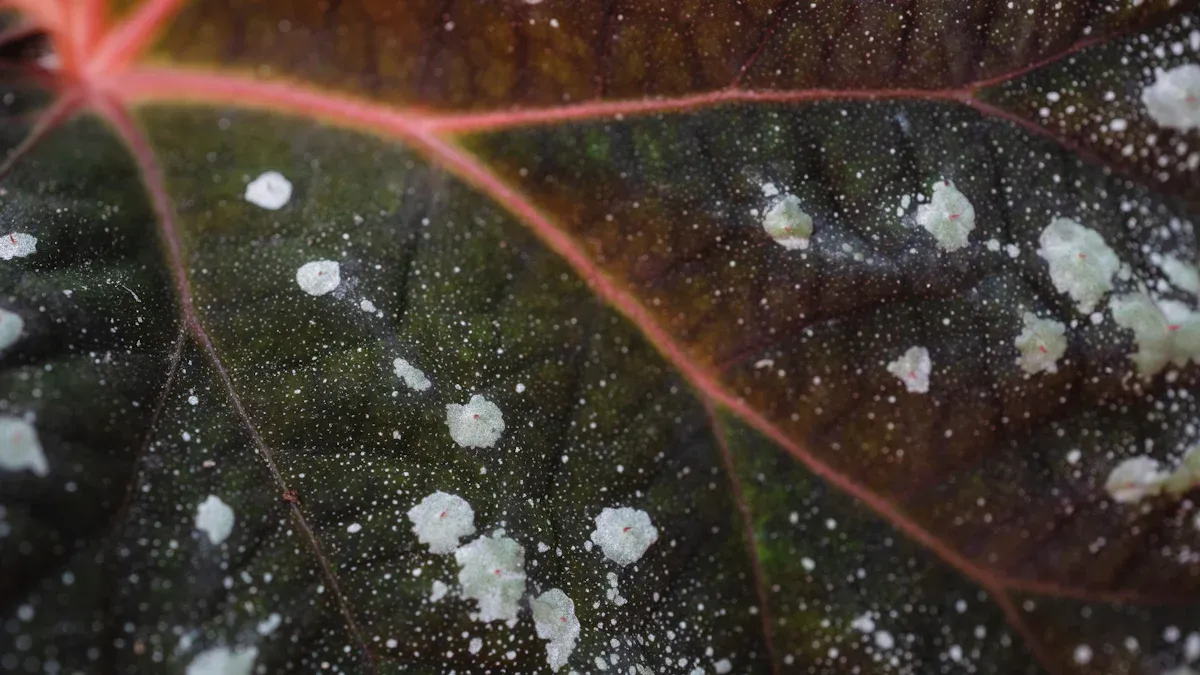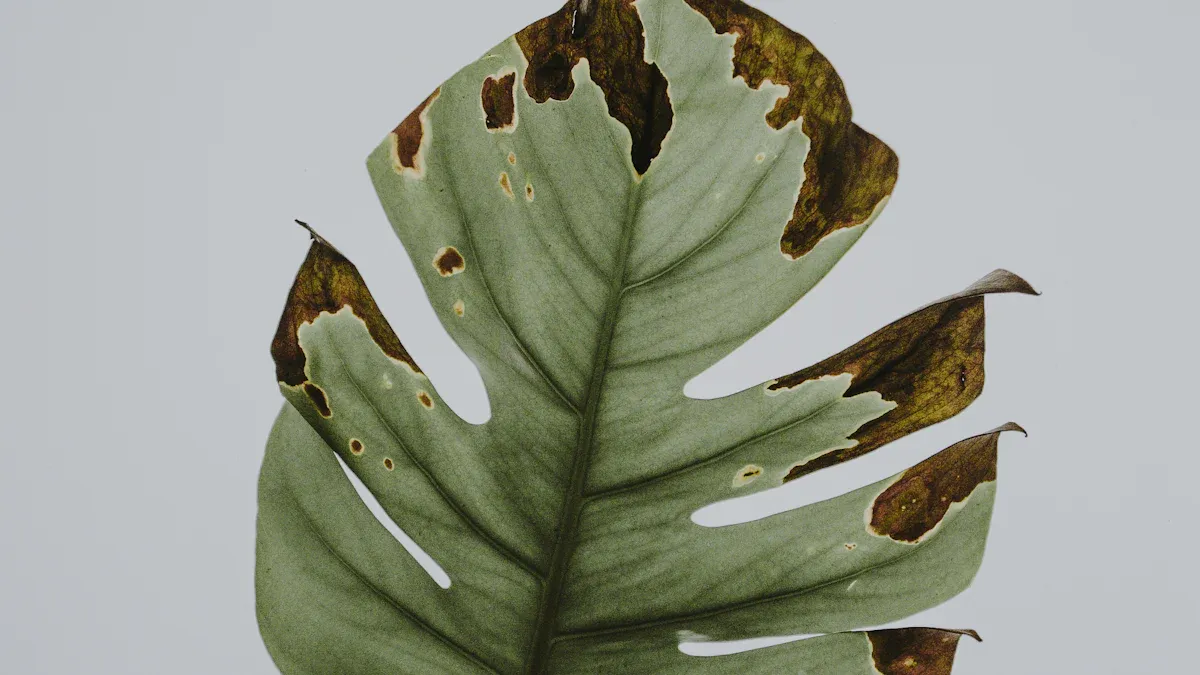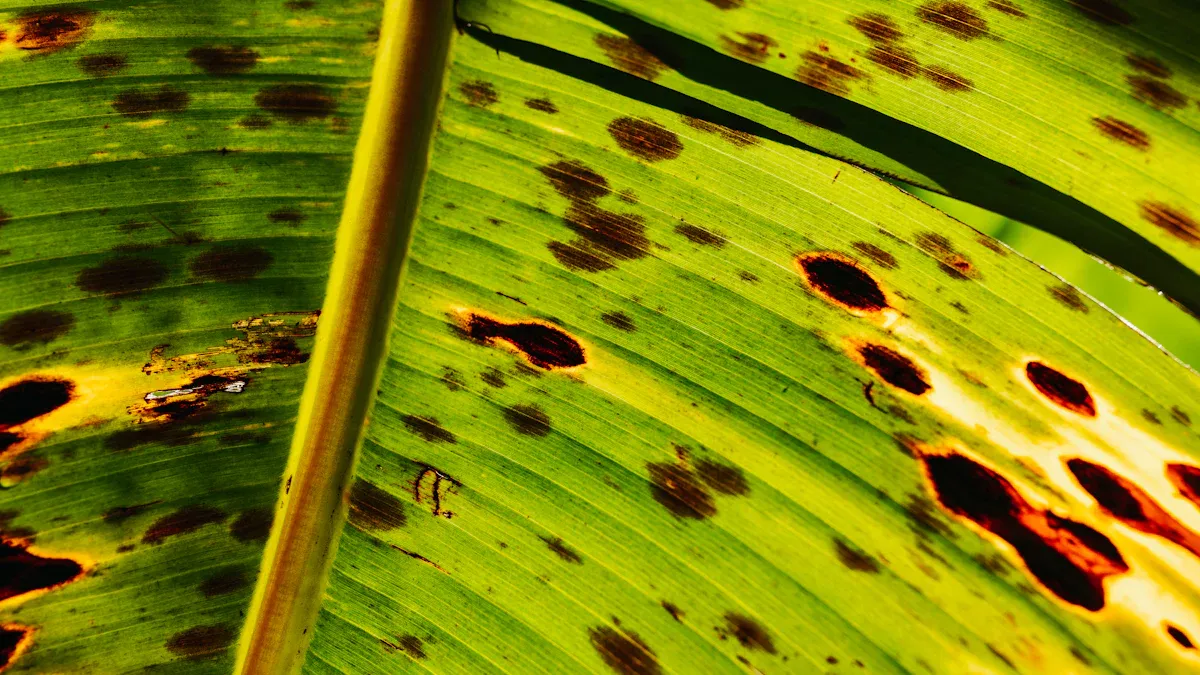
Identifying Crassula plant diseases early is crucial for keeping your plants healthy. When you spot issues like pests or stress signs quickly, you can take action right away. This proactive approach improves treatment success and boosts your plants’ survival rates. Regular checks make all the difference!
Key Takeaways
Regularly check your Crassula plants for signs of disease. Early detection helps you treat problems before they worsen.
Understand the symptoms of overwatering and underwatering. Adjust your watering habits based on the signs your plants show.
Use natural treatments like neem oil to manage pests such as mealybugs and spider mites. This keeps your plants healthy without harsh chemicals.
Symptoms of Crassula Diseases

Water-Related Issues
Watering your Crassula plants correctly is vital for their health. Both overwatering and underwatering can lead to serious problems. Here’s how to identify these issues:
Watering Issue | Symptoms |
|---|---|
Underwatering | – Dropping leaves if extremely dry |
Overwatering | – Yellowing leaves |
If you notice your Crassula leaves are wrinkled or turning brown, it might be a sign of underwatering. On the other hand, yellowing leaves and a mushy trunk often indicate overwatering. Always check the soil moisture before watering to avoid these common pitfalls.
Pest Infestations
Pest infestations can wreak havoc on your Crassula plants. Here are some signs to watch for:
Pest Type | Signs of Infestation |
|---|---|
Mealybugs | Waxy deposits, black sooty mold, yellowing and dying leaves, distorted or stunted growth. |
Spider Mites | Leaves covered with gray webbing, speckled and pale green leaves. |
Aphids | Droopy leaves with shiny, sticky substance or dull black mold. |
Whiteflies | Leaves may show signs of sticky residue and sooty mold. |
Thrips | Silvery green leaves with tiny black specks on their surface. |
If you see white, cottony spots on your plant, you might have mealybugs. Spider mites leave fine webs and cause leaf discoloration. Regularly inspecting your plants can help you catch these pests early.
Fungal Diseases
Fungal infections can also affect your Crassula plants. They often present specific symptoms that set them apart from other diseases. Here’s a quick guide:
Infection Type | Signs | Symptoms |
|---|---|---|
Fungal | Leaf rust, Stem rust, Sclerotinia, Powdery mildew | Birds-eye spot, Damping off, Leaf spot, Chlorosis |
Bacterial | Bacterial ooze, Water-soaked lesions | Leaf spot with yellow halo, Fruit spot, Canker, Crown gall |
Viral | None | Mosaic leaf pattern, Crinkled leaves, Yellowed leaves, Plant stunting |
If you notice powdery spots on your leaves or a general wilting of the plant, it could be a fungal issue. Keeping your plants in well-ventilated areas can help prevent these infections.
By being vigilant and recognizing these symptoms early, you can take action to treat any issues before they escalate. Regular monitoring is key to maintaining the health of your Crassula plants.
Common Problems in Crassula Plants

Root Rot
Root rot is one of the most common problems you might face with your Crassula plants. It usually occurs due to overwatering and poor drainage. When roots sit in excess moisture, they start to decay, leading to serious health issues for your plant. Here are some early warning signs of root rot:
Symptoms | Description |
|---|---|
Yellowing of leaves | This may be the first symptom seen indicating stress in the plant. |
Defoliation | Loss of leaves can occur as the plant struggles with root health. |
Mushy and brown roots/stems | Indicates severe damage to the root system due to excess moisture. |
Oedema | Appears as tiny water-soaked blisters or bumps on lower or older leaves. |
If you notice these symptoms, it’s crucial to act quickly. Here’s how to treat root rot effectively:
Remove the plant from the pot and inspect the roots.
Trim away any rotten or mushy roots with sterilized scissors.
Allow the remaining roots to dry for a few hours.
Prepare a fresh succulent potting mix with excellent drainage.
Repot the plant in a new pot with drainage holes.
Additionally, consider using fungicides to treat any fungal infections that may have developed in the roots. To prevent root rot in the future, ensure you use well-draining soil and avoid overwatering.
Mealybugs
Mealybugs are another common pest that can affect your Crassula plants. These sap-sucking pests can cause significant damage if left unchecked. To identify a mealybug infestation, look for these signs:
Look for excretions: Check for white cotton-like excretions indicating clusters of mealybugs or their egg sacs.
Examine plants thoroughly: Inspect hidden spots such as leaf/stem joints and around the plant crown.
Check new growth: Focus on newer plant growth where mealybugs prefer to feed.
Inspect containers: Look around drainage holes for cottony masses indicating root-feeding mealybugs.
Look for sooty mold: Identify black sooty mold that develops from honeydew excretions, a sign of mealybug presence.
To treat mealybugs, you can use several methods:
Treatment Type | Description |
|---|---|
Neem Oil | A natural pesticide that suffocates mealybugs and prevents larvae maturation. |
Biological Control | Ladybugs are natural predators of mealybugs. They can be released onto the plants to control the infestation. |
Isopropyl Alcohol | 70% isopropyl alcohol can be sprayed directly onto the plant to remove mealybugs. |
Alcohol + Detergent | A mixture of isopropyl alcohol, detergent, and water can be used for a thorough treatment against mealybugs. |
Regular inspections can help you catch these pests early, ensuring your jade plants remain healthy.
Powdery Mildew
Powdery mildew is a fungal disease that can affect your Crassula plants, especially in humid conditions. You can identify this disease by looking for the following symptoms:
Symptom Description | Details |
|---|---|
Whitish fungal growth | Present on leaves, stems, and sometimes petals |
Distortion of foliage | Young foliage and stems may become severely distorted |
Yellowing of leaves | Infected leaves may turn yellow with patches of green |
Premature leaf drop | Infected leaves may fall prematurely |
Affected buds | Infected buds may fail to open |
To treat powdery mildew, consider these effective methods:
Sulfur-based fungicides: Effective for inhibiting spore germination and fungal growth.
Neem oil: Natural fungicide with insecticidal properties.
Cultural practices: Improve air circulation, avoid excessive nitrogen, and remove infected material.
Maintaining good air circulation and avoiding overcrowding can help prevent this disease from taking hold.
Spider Mites
Spider mites are tiny pests that can cause significant damage to your Crassula plants. They thrive in dry conditions and can be hard to spot until the damage is done. Look for these visual cues of distress:
Spider mite damage can be identified by specific signs such as webbing, tiny visible holes, and yellow or bronze spots on the leaves. These symptoms are indicative of spider mite feeding, which is different from the damage caused by other pests.
To manage spider mites, consider these integrated pest management strategies:
Strategy Type | Description |
|---|---|
Biological Control | Use of natural enemies like predatory mites (e.g., Phytoseiulus persimilis, Amblyseius swirskii) to manage spider mite populations. |
Cultural Control | Reducing plant stress by ensuring adequate watering and maintaining higher humidity levels to deter spider mites. |
Mechanical Control | Rinsing off spider mites from plant leaves to reduce their populations, especially during mid-season. |
Regular inspections are key to catching these pests early and keeping your jade plants healthy.
Regularly checking your Crassula plants helps you catch problems early. This proactive care keeps your plants healthy and thriving. For reliable information on managing plant diseases, consider resources like the American Phytopathological Society. They offer valuable insights to help you maintain your plants’ vitality. 🌱
Resource Name | Description |
|---|---|
American Phytopathological Society (APS) | Provides educational resources for plant health and disease management. |
APS Image Database | Contains nearly 7,000 images related to plant diseases, pests, and disorders. |
APS Illustrated Glossary of Plant Pathology | Offers defined terms and images related to plant pathology. |
Common Names of Plant Diseases | Lists approved common names and associated pathogens. |
Grow: Plant Health Exchange | A platform for professionals to exchange knowledge and access applied research. |
FAQ
What should I do if my Crassula leaves are turning yellow?
Yellow leaves often mean overwatering. Check the soil moisture and adjust your watering schedule accordingly.
How can I prevent pests on my Crassula plants?
Regularly inspect your plants and maintain good air circulation. You can also use neem oil as a preventive measure.
Is it normal for Crassula plants to lose a few leaves?
Yes, it’s normal for Crassula plants to shed older leaves. However, excessive leaf drop may indicate stress or disease.

